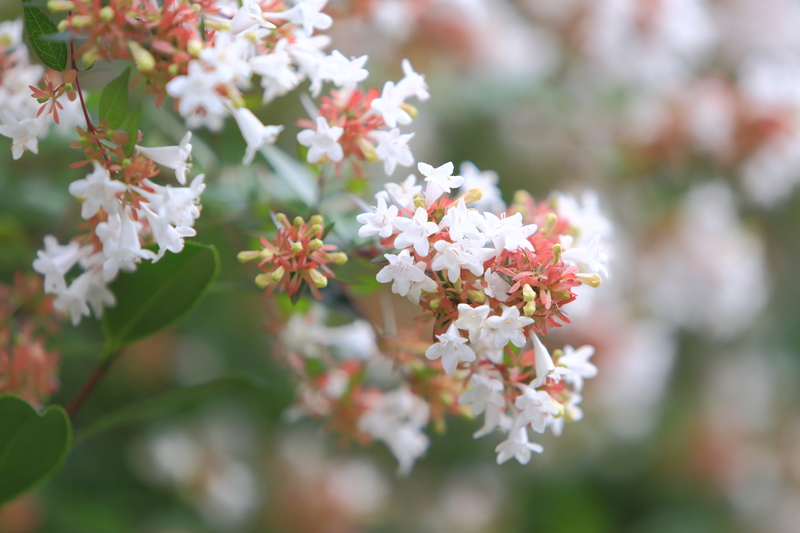Unearth the Potential: Transform Your Neglected Garden
Posted on 19/06/2025
Unearth the Potential: Transform Your Neglected Garden
Does your outdoor space look more like an overgrown jungle than a serene sanctuary? If your garden has been left unattended and you feel overwhelmed by where to start, you are not alone. Many homeowners face the daunting task of reclaiming a neglected garden. Yet, with some inspiration, effort, and smart planning, you can unearth the potential hidden beneath the weeds and debris, and transform your neglected garden into a dream oasis. This comprehensive guide will walk you through every step to revitalize your neglected outdoor space, making it enjoyable and valuable for years to come.
Why Transform Your Neglected Garden?
- Boost Property Value: A vibrant, well-maintained garden dramatically increases curb appeal and property value.
- Enhance Well-being: Outdoor spaces foster mental and physical health by providing opportunities to relax, garden, and reconnect with nature.
- Support Biodiversity: Revitalizing your garden creates habitats for birds, pollinators, and beneficial insects.
- Personal Enjoyment: A transformed garden becomes a personal retreat for gatherings, hobbies, or quiet contemplation.

Step 1: Assess and Envision the Possibilities
Before getting your hands dirty, pause and evaluate the state of your neglected outdoor space. Take photos from different angles, jot down areas of concern, and start dreaming about your ideal garden. Ask yourself:
- What are the main problems - overgrown grass, weeds, broken features, or poor soil?
- Which areas get sunlight, and which are shaded?
- How do you want to transform your neglected garden? Entertaining, growing food, relaxing, or all of the above?
Tip: Drawing a simple plan or sketch will help clarify your vision and guide your restoration project.
Key Questions for Planning:
- How much time and budget can you devote?
- Do you prefer lush lawns, flower borders, or low-maintenance solutions?
- Are there structures such as sheds, patios, or fences that need repair?
Step 2: Clear the Canvas - Clean Up and Declutter
Restoring a neglected garden always starts with a thorough clean-up. This may seem overwhelming, but breaking it down into manageable tasks can make the process enjoyable and rewarding.
Essential Tasks to Unearth Your Garden's Potential:
- Remove Large Debris: Clear fallen branches, trash, broken planters, and old furniture.
- Cull Overgrowth: Cut back overgrown shrubs, trim hedges, and mow unruly grass.
- Weed Ruthlessly: Dig out invasive plants and persistent weeds with roots to prevent regrowth.
- Prune and Deadhead: Trim dead or diseased branches on trees and shrubs.
Pro Tip: Enlist friends or family for a weekend garden blitz; collective effort makes a big difference!
Step 3: Assess Soil Health
Your next step to transform your neglected garden is understanding the foundation: the soil. Healthy soil is the backbone of a thriving outdoor space. Use these steps to test and rejuvenate your soil:
- Test pH and Nutrient Levels: Simple DIY kits from garden centers can pinpoint imbalances.
- Aerate and Amend: Loosen compacted soil and add organic matter like compost or well-rotted manure.
- Mulch: Apply a thick layer of mulch to suppress weeds, retain moisture, and enrich the soil.
Investing time in soil health pays off with vigorous plants and fewer problems in the future.
Step 4: Design with Purpose
With a clean slate and improved soil, now is the time to unearth the true potential of your garden with thoughtful design. Whether your style is wild and natural or sleek and modern, planning purposeful zones brings lasting value and enjoyment.
Smart Zoning Ideas to Transform Your Neglected Garden:
- Entertaining Area: Create patios, decks, or gravel zones for outdoor dining and relaxation.
- Planting Borders: Edge areas with low-maintenance perennials or colorful annuals.
- Wildlife Havens: Add log piles, native plants, water sources, and nesting sites for birds.
- Edible Garden: Dedicate a sunny spot for raised beds, herbs, fruits, or vegetables.
- Children's Play Zone: Reserve an area for safe play, complete with grass, sandpits, or swings.
Tip: Make walkways that connect these zones using gravel, stepping stones, or bark mulch for easy navigation and a seamless flow.
Step 5: Choose the Right Plants
Plant selection is vital for a thriving, low-maintenance garden that flourishes year after year. Choose plants according to your climate, soil, and the amount of sunlight each area receives.
- Perennials: Invest in hardy, long-lived plants such as lavender, daylily, and hosta that require less attention.
- Native Species: Opt for plants indigenous to your region for less water, fewer pests, and increased wildlife.
- Evergreens: Use evergreen shrubs and trees to provide structure and color in winter months.
- Fast-Impact: Annuals and bedding plants provide instant color while longer-term plantings mature.
Balance your plant choices to ensure year-round interest and easy care.
Step 6: Install Features and Structures
Elevate your restored garden with features that add function and personality:
- Paths and Edging: Use brick, timber, metal, or stones to create crisp borders and defined pathways.
- Lighting: Install solar garden lights for safety, drama, and nighttime ambience.
- Seating Areas: Add benches, hammocks, or swing seats for relaxation.
- Pergola or Arches: Incorporate vertical structures for climbing plants and shaded retreats.
- Water Feature: Even a small fountain creates a focal point and tranquil sound.
Add character with upcycled materials--reclaimed wood, vintage planters, or creative mosaics--making your garden truly unique.
Budget-Friendly DIY Ideas:
- Build a birdbath from an old bowl or basin.
- Use pallets for vertical gardens or compost bins.
- Craft stepping stones from concrete or large flat rocks.
Step 7: Revitalize Lawns and Ground Covers
Lawns often suffer most in neglected gardens but can be revived through:
- Scarifying: Raking to remove moss and grass thatch.
- Aerating: Spiking or coring compacted soil for better drainage and root growth.
- Reseeding Bare Patches: Sprinkle grass seed and water for lush, even coverage.
- Alternative Ground Covers: Clover, creeping thyme, or chamomile are attractive, resilient options requiring less mowing.
If lawn maintenance seems daunting, reduce lawn size with mulched beds or wildflower meadows, embracing a sustainable aesthetic.
Step 8: Encourage Nature and Sustainability
When you transform your neglected garden, consider how your changes benefit the planet. Eco-friendly approaches not only reduce costs but foster a healthier, more self-sustaining landscape.
- Pollinator Planting: Choose varieties that attract bees and butterflies.
- Rainwater Collection: Install butts to harvest water for irrigation.
- Composting: Recycle garden and kitchen waste to enrich your soil naturally.
- Pesticide Reduction: Encourage beneficial insects and use organic controls for pests.
- No-Dig Beds: Mulch deeply and avoid soil disturbance to promote soil life.
Create a legacy: Sustainable gardening preserves resources for future generations while supporting local ecosystems.
Step 9: Maintenance Made Simple
The key to keeping your garden beautiful and productive is consistent, light maintenance rather than sporadic heavy work:
- SCHEDULE weekly weeding and deadheading sessions.
- MULCH to suppress weeds and conserve moisture.
- TRIM hedges and mow lawns regularly through the season.
- INSPECT for pests, disease, or damage early.
Little-and-often maintenance is easier and more effective than annual overhauls.
Step 10: Celebrate and Enjoy the Transformation!
Hard work deserves reward. Host a garden party, invite friends, or simply relax with a book and cup of tea in your newly transformed outdoor space. Take pride in the journey from neglected patch to flourishing paradise. Remember to document your progress with photos--the transformation will inspire you and others.

Additional Tips to Unearth Your Garden's Potential
Seasonal Task List:
- Spring: Prune shrubs, plant new perennials and annuals, mulch beds.
- Summer: Water deeply, deadhead flowers, mow lawns.
- Autumn: Rake leaves, plant spring bulbs, compost spent plants.
- Winter: Protect tender plants, plan improvements, and enjoy evergreens.
Engage the Community
Share surplus plants, seeds, or cuttings with neighbors and get involved in community gardening projects--transforming neglected spaces can bring people together and promote well-being.
Garden Design Apps
Leverage free or inexpensive mobile apps to visualize your design, identify plants, and plan seasonal care routines.
Conclusion: The Joy of Rediscovered Green Spaces
Unlocking the beauty and potential of a neglected garden is a deeply rewarding experience. Not only does it create a beautiful, functional outdoor space, but it also benefits the environment, community, and your own well-being. Whether you have a tiny urban plot or a sprawling backyard, the steps outlined in this guide will help you transform your neglected garden into a source of pride and pleasure.
Don't wait--start today and watch your outdoor sanctuary come alive. Unearth the hidden potential and enjoy every stage of your garden's transformation!
Ready to Begin Your Garden Transformation?
Share your progress, connect with other passionate gardeners, and keep learning--your neglected garden is full of promise. All it takes is your vision and determination to transform your garden into a vibrant, inspiring haven.

